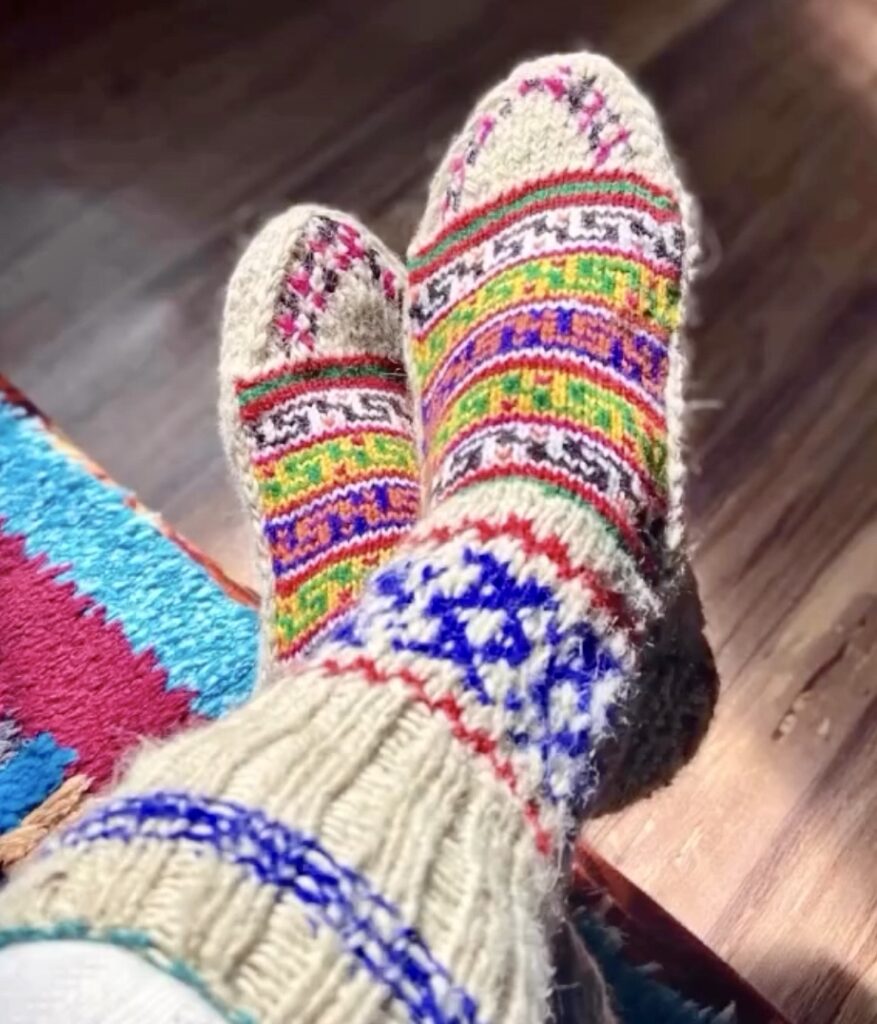Knitting the Past: Uncovering the History of Lahauli Socks

Knitting the Past: Uncovering the History of Lahauli Socks
One might wonder what brought these missionaries to the remote reaches of Lahaul in the 19th century, a time when much of the region remained isolated from the outside world. During the colonial period, European missionaries journeyed to India with the aim of converting local populations and spreading Christianity. Like their counterparts elsewhere in the country, Moravian Christians established a presence in the secluded expanse of Lahaul.

Crafted from indigenous wool sheared from local sheep, Lahauli socks and gloves are meticulously knit in sections using four double-pointed needles. The intricate patterns adorning the socks, known locally as "dashi," incorporate up to eight colors and feature a symphony of motifs such as Bumchang, Lari, Zildan, Kuru, Thingma, and Kyog. These motifs, each steeped in local lore, lend each pair of socks its unique charm.


The Wonder Plant of the Himalayas: Seabuckthorn
The Wonder Plant of the Himalayas: Seabuckthorn In the arid regions of Ladakh and Lahaul-Spiti, where few major trees thrive, a remarkable shrub stands out

Debunking Common Myths About Honey
Honey has been cherished for centuries, not just as a sweet treat, but also for its numerous health benefits. Despite its long history and widespread

Are we saving the WRONG BEES ?
For years, conventional wisdom, popular slogans, and ad campaigns have heralded the same message: “we need to save the honeybees”. Products from various categories proudly

Savoring Harmony: Tirthan Valley’s Native Honey, Where Conservation Meets Sweet Success
In the serene mountains of Tirthan Valley in Kullu, a unique practice is yielding results that not only promote environmental conservation but also generate a

Brushstrokes of Heritage: Navigating the Enchanting World of Kangra Paintings
यथा सुमेरू: प्रवरो नगानां यथाण्डजानां गरुड: प्रधान:I यथा नराणां प्रवर: क्षितीशस्तथा कलानामिह चित्रकल्प” II ४३:३९ II (Viśṇudharamottara Puraṇa) As Sumeru is the best of mountains,

Buddhi Diwali: A Unique Celebration in the Hills
Did you know that certain regions in Himachal Pradesh observe the festival of Diwali not once, but twice a year? Indeed, this unique celebration takes

